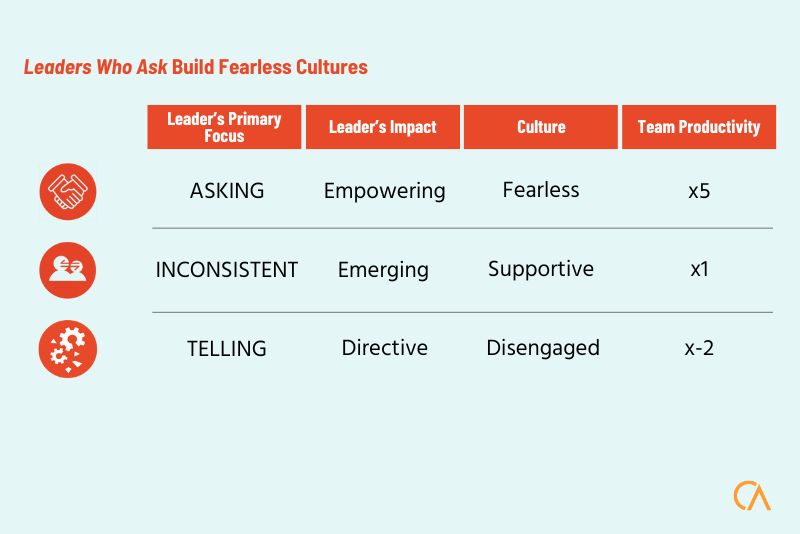
Your role as an executive includes leading your division, developing your people, and working with your executive colleagues to make organisational decisions.
One role that is not often mentioned is to stop the CEO being victim of their own strengths.
Victim of their strengths? How does that work? Don’t you mean weakness?
Our greatest strengths are only a smidgeon (technical leadership term!) from our greatest weakness. Dial up a strength slightly – and boom! – we have strength in excess – often a blind spot.
Akinyi is innovative, focused and driven to make change. This drive has been a major factor in her success, and under her guidance, the organisation she leads has gone from mediocre to highly performing. Dialed up too high – without choiceful application – this results focus feels like a barrage of new ideas on top of a relentless push to do more. People across the organisation, especially middle level managers, are feeling the pressure. The unofficial role of her most trusted executives is to help her see the impact of her drive and be choiceful about when to push and when to allow more time.
Waylen wants to keep people happy, conscious of inclusion and maintaining harmony across the organisation. With a CEO who cares, people across the organisation feel cared for… And yet when unmoderated, Waylen’s affinity focus makes it hard for him to make and communicate decisions that will be unpopular. Bad behaviour goes uncommented on, and people are left with mixed messages. The unofficial role of his closest executives is to challenge him, hold a mirror up to the impact of his unconscious preferences, and remind him of his commitment for change.
How can you support your leader, and help prevent them being a victim of their strengths? What supports do you have around you to keep your strengths operating as strengths?
Go fearlessly
STAY IN THE LOOP





